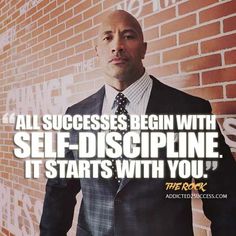Success Advice
3 Must-Haves For Increasing Your Self-Esteem

Why are your successes never enough to outweigh the failure you fear and take so personally?
This fear has planted roots in your psyche and eroded your self-esteem. It cripples your thinking and overshadows everything you do.
What you and most people don’t understand is that success is personal.
Unless you make it personal, you’ll be stuck forever in the tracks your fear has laid down.
When I finally realized the biggest barrier to my success was me, I honestly didn’t know what to do.
For too many years, my success had depended on getting recognized for my contributions as I helped other people become successful. It took me a while to realize that my unquenchable need for their approval had screwed up my self-esteem.
Too bad I didn’t realize that before starting my own business.
Learning to Get Out of Your Own Way
It wasn’t just the business failure though – I had failed myself. Going to work for someone else again would have been another kind of failure.
I had to figure out how to move forward differently.
To do that, I had to accept failure as the great information provider it is, instead of a personal reflection of me.
In doing that I came to understand the personal nature of success.
The 3 Must-Haves I Discovered That Will Up Your Self-Esteem and Drive Your Success
Because success is personal – you must get personal with yourself.
In building up my self-esteem, I had to rethink how I looked at myself. That’s what you’ll need to do too.
These exercises will have you becoming less outwardly focused, and more self-aware, in a good, non-obsessive way.
They are the necessary steps for changing your motivation from fear to one that will have you manifesting a success that is uniquely yours.
Must-Have #1: Good Control Over Your Inner Critic
No one is harder on you than you. One of the biggest barriers to your success is all the negative self-talk your inner critic inflicts on you.
It affects not only how you think about yourself (self-esteem), but also how you think about what you do (self-worth.)
Too much negativity and your inner critic harps on all your real or imagined failings. You need to get that ongoing barrage of abuse under control.
Controlling Your Inner Critic
How do you do it?
Ridicule.
Seriously, when your inner critic starts dumping on you:
- Turn it into a figure of fun.
- Laugh at it! Laugh at what it says about you.
- Imagine how ridiculous it looks, and take that look to the extreme.
I see my inner critic as a bulldog – with a bright pink ruff around its neck. Just picturing it shrinking down and sitting in one of those fancy little teacups makes me laugh.
Why does this work?
By taking control of your interactions with your inner critic, you’re stepping out of the role of being its victim. Taking control is a positive step that ups your self-esteem.
The more you interrupt your inner critic’s patterns of negativity, the easier it is to change what you think about yourself.
“To dream by night is to escape your life. To dream by day is to make it happen.” – Stephen Richards
Must-Have #2: Willingness to Embrace Your Weaknesses
Criticizing yourself for having weaknesses, over-compensating for them, or blaming them for your failures actually gets in the way of your success.
This must-have is about looking at them and yourself with compassion. Just believing you deserve such kindness is a great boost to your self-esteem.
Embracing Your Weaknesses
So what do you do?
Switch from a criticizing mindset to one that looks for improvements. Accept both your strengths and weaknesses.
This is how you start:
- Identify where you can make small changes that have a positive impact.
- Start by going for easy wins.
- Get the changes locked-in, and move onto the next ones.
When you disparage parts of yourself, you create internal conflicts and end up focusing on fixing the wrong things.
Why does this work?
There are three primary reasons why this works:
- Small changes add up and create larger impacts.
- One success builds on another.
- Doing positive things for yourself adds to your feelings of self-worth, and ups your self-esteem.
When I did this, I saw where I could make changes to my business model. The result? More opportunities for success, and more trust in myself.
“Motivation is what gets you started. Habit is what keeps you going.” – Jim Ryun
Must-Have #3: An Old-Fashioned “Fly By The Seat of Your Pants” Attitude
The first planes were essentially physical extensions of the pilots. The actions the fliers took were limited, purposeful and focused on achieving the desired outcome.
There’s nothing like life or death situations for giving purpose and meaning to what you do.
What you need to have is the same attitude as the old-fashioned pilots. Don’t make a move that doesn’t have the express purpose of getting you one step closer to success.
Getting This Focused Attitude
How do you get it?
Start by answering this question: What do you value and how do you want to be manifesting, feeling, and expressing those values to the world?
Then expand your answer by completing these 3 steps:
- Identify your self-chosen ideals, the ones that resonate with you.
- Translate them to specific value statements for all areas of your life: family, health, financial, spiritual, community, etc.
- Determine what you want to manifest and express to the world about your values.
Taking this advice that comes from Jack Canfield helped me consolidate the changes I was making, and increased my focus. Doing this work helps you build the foundation of your success.

Why does this work?
It’s about connecting the dots between your thinking, feelings, and beliefs. When you’re done, you have an integrated picture of who you are and clarity on what you value.
This is where success gets personal.
This is where you clearly define what success means to you.
This is where you get your ongoing motivation for manifesting your success.
How The 3 Must-Haves Work Together To Up Your Self-Esteem and Drive Your Success
It takes a healthy self-esteem to put yourself out there in a way that is uniquely personal to you.
A mindset that looks for improvements helps you handle setbacks and failures, in a positive way.
The right attitude keeps the focus on what you value and how you express those values. It’s what pulls all the pieces together and gets everything you do pointing in the same direction.
When that happens, you know what advice to follow, what programs to use, and what steps to implement.
“The mind is a powerful thing. It can take you through walls.” – Denis Avey
This Is Your Personal Brand of Success
It’s all about you and how you’re expressing and manifesting what you want in your life.
It’s what I’m doing in mine. Finally, for the first time in my life, I’m living and expressing what I value through the work I’ve chosen to do.
Having control over your life and your success in this way is enormously empowering – and more than worth all the effort.
Start at the beginning. Do all the exercises. Take a good look at what you value and how you want to express it.
That’s the success you want.
That’s the success you’ll create.
That’s the success you’ll drive right through the roof.
Here’s to your success!
Did You Know
How Skilled Migrants Are Building Successful Careers After Moving Countries
Behind every successful skilled migrant career is a mix of resilience, strategy, and navigating systems built for locals.

Moving to a new country for work is exciting, but it can also be unnerving. Skilled migrants leave behind familiar systems, networks, and support to pursue better job opportunities and a better future for their families. (more…)
Life
10 Research-Backed Steps to Create Real Change This New Year
This New Year could finally be the one where you break old patterns and create real, lasting change.

Every New Year, we make plans and set goals, but often repeat old patterns. (more…)
Change Your Mindset
The Silent Skill That Makes People Respect You Instantly
What truly earns respect and why most people go about it the wrong way

Everybody craves respect but not everyone earns it. Some people believe that a title, years of experience, or a position of authority automatically entitles them to respect. (more…)
Entrepreneurs
The Essential Skills Every Entrepreneur Needs In 2026
Success in the digital age isn’t about luck. It’s about mastering the skills that separate dreamers from doers.

When I was 22 years old, I started my first side hustle as a ghostwriter. (more…)
-

 Business4 weeks ago
Business4 weeks agoWhy Your E-Commerce Fulfilment Is Probably Broken (And How to Fix It)
-

 Shift Your Mindset3 weeks ago
Shift Your Mindset3 weeks ago11 E’s That Define Every Great Leader And Why Most People Miss Them
-

 Did You Know3 weeks ago
Did You Know3 weeks agoThe Success Patterns You Inherited (And Didn’t Notice)
-

 Entrepreneurs2 weeks ago
Entrepreneurs2 weeks agoThe Essential Skills Every Entrepreneur Needs In 2026
-

 Business3 weeks ago
Business3 weeks agoThe Hidden Money Pit in Your Operations (and How to Use It)
-

 Change Your Mindset2 weeks ago
Change Your Mindset2 weeks agoHow to Turn Your Mind Into Your Greatest Asset (Instead of Your Enemy)
-

 Change Your Mindset1 week ago
Change Your Mindset1 week agoThe Silent Skill That Makes People Respect You Instantly
-

 Life1 week ago
Life1 week ago10 Research-Backed Steps to Create Real Change This New Year



























22 Comments